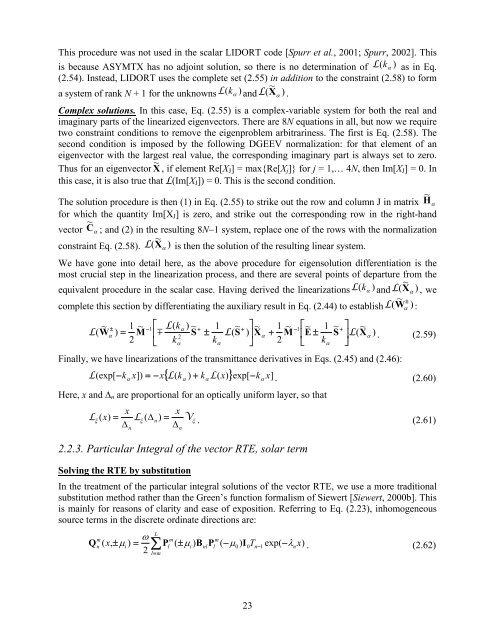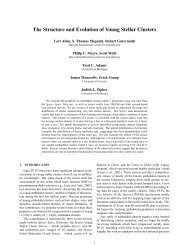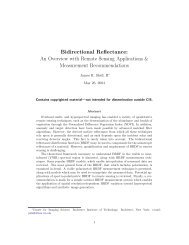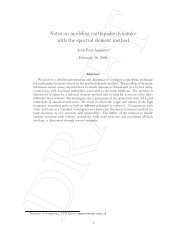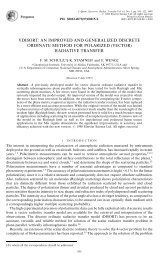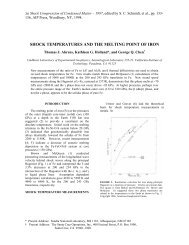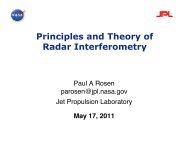VLIDORT User's Guide
VLIDORT User's Guide
VLIDORT User's Guide
You also want an ePaper? Increase the reach of your titles
YUMPU automatically turns print PDFs into web optimized ePapers that Google loves.
This procedure was not used in the scalar LIDORT code [Spurr et al., 2001; Spurr, 2002]. Thisis because ASYMTX has no adjoint solution, so there is no determination of L ( k α) as in Eq.(2.54). Instead, LIDORT uses the complete set (2.55) in addition to the constraint (2.58) to forma system of rank N + 1 for the unknowns L( k α) and L ( X~α) .Complex solutions. In this case, Eq. (2.55) is a complex-variable system for both the real andimaginary parts of the linearized eigenvectors. There are 8N equations in all, but now we requiretwo constraint conditions to remove the eigenproblem arbitrariness. The first is Eq. (2.58). Thesecond condition is imposed by the following DGEEV normalization: for that element of aneigenvector with the largest real value, the corresponding imaginary part is always set to zero.Thus for an eigenvector X ~ , if element Re[X J ] = max{Re[X j ]} for j = 1,… 4N, then Im[X J ] = 0. Inthis case, it is also true that L(Im[X J ]) = 0. This is the second condition.The solution procedure is then (1) in Eq. (2.55) to strike out the row and column J in matrix Η ~αfor which the quantity Im[X J ] is zero, and strike out the corresponding row in the right-handvector C ~ α ; and (2) in the resulting 8N−1 system, replace one of the rows with the normalizationconstraint Eq. (2.58). L ( X~α) is then the solution of the resulting linear system.We have gone into detail here, as the above procedure for eigensolution differentiation is themost crucial step in the linearization process, and there are several points of departure from theequivalent procedure in the scalar case. Having derived the linearizations L( k α) and L ( X~α) , we~ ±complete this section by differentiating the auxiliary result in Eq. (2.44) to establish L ( W α) :~L(W±α1 ~) = M2−1⎡ L(kα) ~ + 1 ~ +⎤ ~ 1 ~ −1⎡~1 ~ +⎤ ~⎢m S ± L(S ) X( )2⎥ α + M ⎢E± S ⎥LXα. (2.59)⎣ kαkα⎦ 2 ⎣ kα⎦Finally, we have linearizations of the transmittance derivatives in Eqs. (2.45) and (2.46):L (exp[ −kαx])= −x{ L(kα) + kαL(x)} exp[ −kαx]. (2.60)Here, x and Δ n are proportional for an optically uniform layer, so thatx xLξ( x)= Lξ( Δn)= VξΔ Δ. (2.61)nn2.2.3. Particular Integral of the vector RTE, solar termSolving the RTE by substitutionIn the treatment of the particular integral solutions of the vector RTE, we use a more traditionalsubstitution method rather than the Green’s function formalism of Siewert [Siewert, 2000b]. Thisis mainly for reasons of clarity and ease of exposition. Referring to Eq. (2.23), inhomogeneoussource terms in the discrete ordinate directions are:Lm ω mmQn( x,± μi) = ∑ Pl( ± μi) BnlPl( −μ0)I0Tn−1exp( −λnx). (2.62)2l=m23


